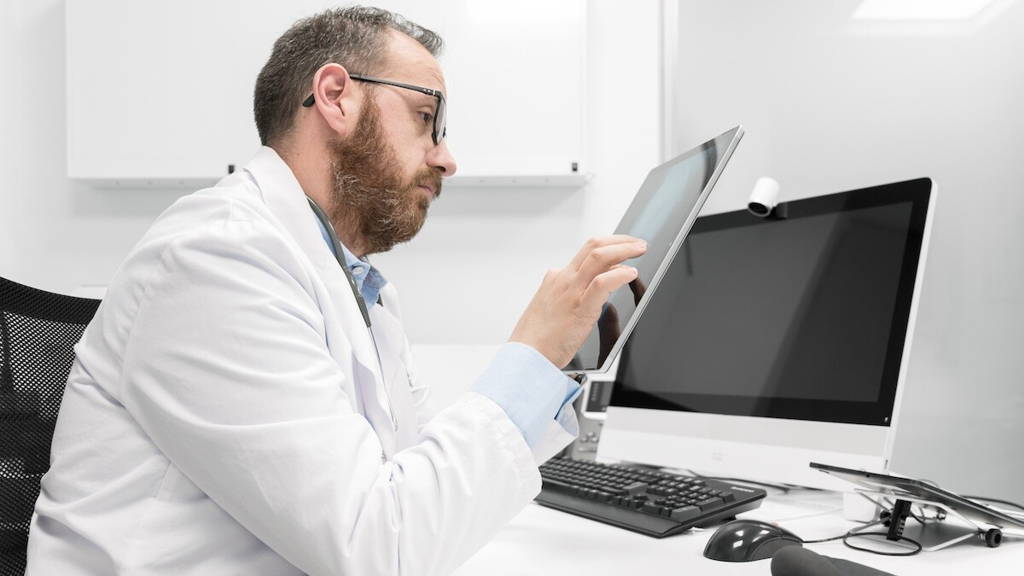Now that the European Health Data Space (EHDS) has come into effect, the Standing Committee of European Doctors (CPME) is calling on suppliers of patient systems (EHRs and other software that processes personal and medical data) to focus on user-friendliness when adapting their software. This is something that the standardisation organisation IHE has been emphasising for some time. Because doctors are still losing far too much time on unnecessary administrative work, says Carla Meeuwis, user chair at IHE Netherlands and also affiliated with the Digital Health working group of the CPME.
Meeuwis is a radiologist at Rijnstate in her daily life. Because she sees in her own practice that poor interoperability of software creates patient risks and the workload of doctors is irresponsibly high, she volunteers to climb on the soapbox in addition to her already busy job and to emphasise the importance of well-functioning software.
“Last year, CPME drew up a nine-point statement on software that processes patient data. These nine points are nine requirements that we believe systems must meet. They are very logical requirements. For example, that data that has already been entered digitally somewhere is automatically transferred to other systems that process data about the same patient. It is actually crazy that we have to explicitly state such wishes. It should be logical that software used by doctors makes their work easier and not more difficult.”
Current practice
Because that is now too often the case. Meeuwis gives an example from her own practice. “I specialize in breast diagnostics. We have worked incredibly hard with the National Breast Cancer Consultation Netherlands (NABON) on an information standard that suppliers can incorporate into their various systems (such as the EPD, the system for the population screening for breast cancer, radiology-pathology systems, etc.).”
By not using free text fields but storing data in a structured manner, you can reuse that data more easily. At least that was the idea, says Meeuwis. “But what happens in practice? We now have to retype data box by box, instead of being able to copy-paste an entire block of text. So we have saddled ourselves with an enormous administrative burden. In the end, we also have to retype all that data into Excel sheets for external accountability in various registration systems.”
EHDS and data availability
This is something that the EHDS – the European Health Data Space, an EU regulation that came into effect in March – must put an end to. To ensure that software suppliers implement the EHDS correctly in their software, the CPME is making its appeal again, now with the emphasis on seamless integration of all systems that contain patient information, both inside and outside the hospital walls. “We really need to start working on data availability quickly,” says Meeuwis.
She recognises the research data that the Federation of Medical Specialists (FMS) recently published, which shows that almost half of doctors experience one or more patients at risk every day due to poor availability of patient data. “It is beyond belief that information about allergies or medication use, for example, is not shared in the healthcare ecosystem and that patients are often asked to bring their own medication overview. That is simply inexplicable in 2025.”
Interoperability requirements
Now that the EHDS is going to impose requirements on the interoperability of electronic patient records and other software systems that process personal and medical data, it is up to suppliers to adapt their software. They can learn a lot from the IHE method, says Meeuwis.
“IHE develops exchange profiles. Profiles are everything you need to achieve electronic data exchange: both the technical and semantic agreements as well as working agreements and the governance around the entire process. IHE always involves all parties: software suppliers, but also the IT departments of the healthcare organisations and the users of the software, i.e. doctors and nurses. In this way, you prevent suppliers from developing software that does not match the working methods of doctors and nurses.”
Part of the IHE method is that the newly developed exchange profiles are then tested in a practical setting. Of course, attention is paid to the technical side – does the right data end up in the right field in the right way? – but also to the process side: does the IHE profile do in practice what was conceived in theory? And even after the software has been delivered, there is feedback. After all, work processes can change and that means that the software must change along with it.
Guaranteeing user-friendliness
Meeuwis: “The IHE method has proven itself in practice as a way to ensure that software is user-friendly. That is why I call on software suppliers: don't come up with something new yourself, but join IHE and use our method, which has been proven in practice. Then you can both speed up the implementation of the EHDS and ensure that the software you develop meets the needs and work processes of healthcare providers.”









